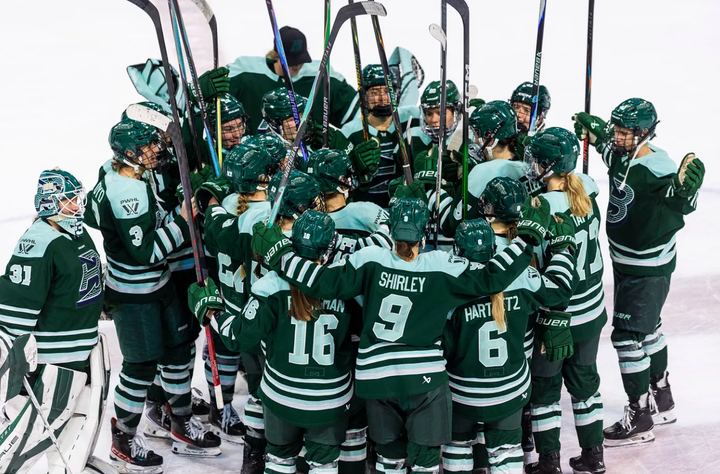Coaching Staff Diversity in NCAA Leads to Success
The powerhouses of Division I women’s hockey have something in common behind the bench
It’s no secret that women’s hockey, as a sport, could use a boost in diversity.
The price of gear, team dues, and other necessities narrow the player pool to those with the means to continue playing. Diversity in the game, however, cannot be limited to the players — it’s just as important behind the bench.
A primary area of concern with women’s hockey coaches is whether or not they’re being coached by women. There are many male coaches of women’s teams that are known for their success (Minnesota’s Brad Frost, for example), but there must be benefits of having a woman behind the bench, coaching other women.
Generally, coaching positions tend to be filled by men more often than by women.
Boston College’s women’s hockey program garnered some attention for having an all-female coaching staff in 2016. It’s still the only women’s hockey program in Women’s Hockey East (WHEA) with three female coaches, although Gillian Apps (formerly of Team Canada and then Brampton Thunder) has since been replaced by Courtney Sheary.
Boston College is not, however, the only team in Division I with an all-female staff. In the Eastern College Athletic Conference (ECAC), both Brown and Princeton have three female coaches. In the Western Collegiate Hockey Association (WCHA), the University of Minnesota-Duluth and Ohio State do as well. The only conference without a single all-female coaching staff is College Hockey America (CHA).
CHA has a marked diversity problem, and a lack of all-female coaching staffs is one symptom. Another is that CHA is the only conference where a team — three, in fact — have no female coaches at all — Lindenwood, Rochester Institute of Technology (RIT), and Syracuse.
In all three of the other conferences, each team has at least one female coach. There are ten female head coaches in Division I women’s hockey, and none of them are CHA coaches. ECAC has the most, with five.
National champion @CUknights finishes the season at No. 1 in the USA Today/@USAHMagazine Women's College Hockey Poll → https://t.co/bVd5j2i35P pic.twitter.com/SlRd8Tyw9e
— USA Hockey (@usahockey) March 20, 2018
Is it a coincidence that the highest ranked CHA team at the end of last season was Mercyhurst, at No. 10? It might be. Only two of the top 10 in the final rankings had all-female staffs (OSU at No. 4, BC at No. 5).
What’s less likely to be a coincidence is the fact that Mercyhurst, the highest ranked CHA team last season, has two female assistant coaches, both of whom have experience playing pro women’s hockey.
Kelley Steadman, formerly of the Buffalo Beauts and Boston Blades, and Beth Hanrahan, formerly of the Metropolitan (New York, at the time) Riveters, are able to impart a special brand of wisdom that no male coach can offer, regardless of professional hockey experience or previous coaching experience.
Having experienced both NCAA and pro women’s hockey firsthand, coaches like Steadman and Hanrahan bring a different kind of diversity to the team — diversity of experience.
Mercyhurst isn’t the only team with coaches who have played professional women’s hockey. Penn State, the University of Vermont, Princeton, OSU, BU and Northeastern all do as well, and not all of them have been as successful as Mercyhurst.
What the top 10 teams at the end of last season have in common is that their coaching staffs combine both kinds of diversity.
Clarkson combines their head coach Matt Derosiers’ 10 years of head coaching experience with assistant coach Britni Smith’s firsthand ECAC playing experience as a former St. Lawrence standout.
Two of Boston College’s three female coaches have Olympic and World Championship playing experience, as well as experience coaching U18 women’s teams.
Northeastern and Mercyhurst both have assistant coaches with professional playing experience and head coaches who have built women’s hockey programs from the ground up.
It seems that the recipe for success with coaching staffs, as far as there might be one, is to build a staff with diverse approaches, experiences, and backgrounds — starting with, but not ending with, more women.





Comments ()